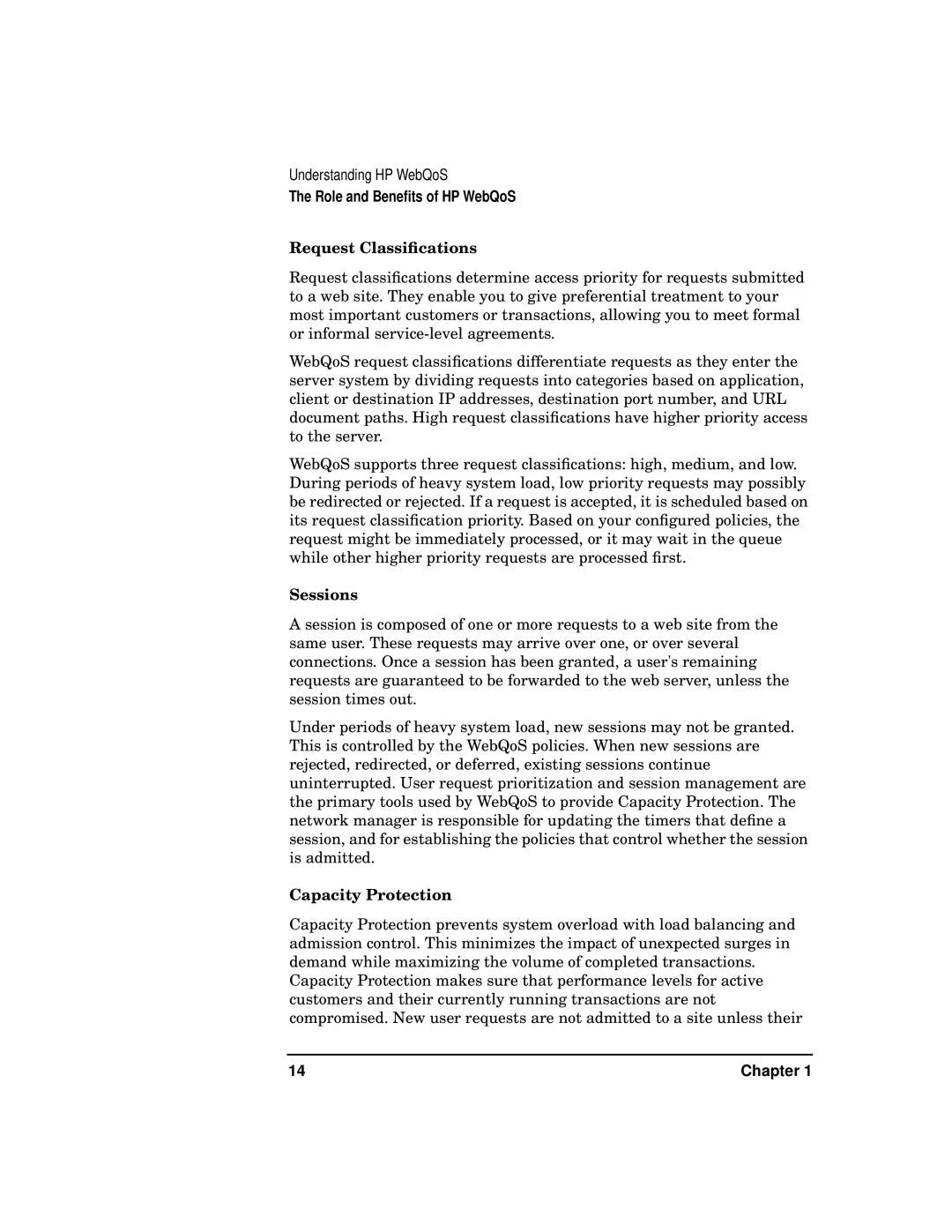Understanding HP WebQoS
The Role and Benefits of HP WebQoS
Request Classifications
Request classifications determine access priority for requests submitted to a web site. They enable you to give preferential treatment to your most important customers or transactions, allowing you to meet formal or informal
WebQoS request classifications differentiate requests as they enter the server system by dividing requests into categories based on application, client or destination IP addresses, destination port number, and URL document paths. High request classifications have higher priority access to the server.
WebQoS supports three request classifications: high, medium, and low. During periods of heavy system load, low priority requests may possibly be redirected or rejected. If a request is accepted, it is scheduled based on its request classification priority. Based on your configured policies, the request might be immediately processed, or it may wait in the queue while other higher priority requests are processed first.
Sessions
A session is composed of one or more requests to a web site from the same user. These requests may arrive over one, or over several connections. Once a session has been granted, a user's remaining requests are guaranteed to be forwarded to the web server, unless the session times out.
Under periods of heavy system load, new sessions may not be granted. This is controlled by the WebQoS policies. When new sessions are rejected, redirected, or deferred, existing sessions continue uninterrupted. User request prioritization and session management are the primary tools used by WebQoS to provide Capacity Protection. The network manager is responsible for updating the timers that define a session, and for establishing the policies that control whether the session is admitted.
Capacity Protection
Capacity Protection prevents system overload with load balancing and admission control. This minimizes the impact of unexpected surges in demand while maximizing the volume of completed transactions.
Capacity Protection makes sure that performance levels for active customers and their currently running transactions are not compromised. New user requests are not admitted to a site unless their
14 | Chapter 1 |
